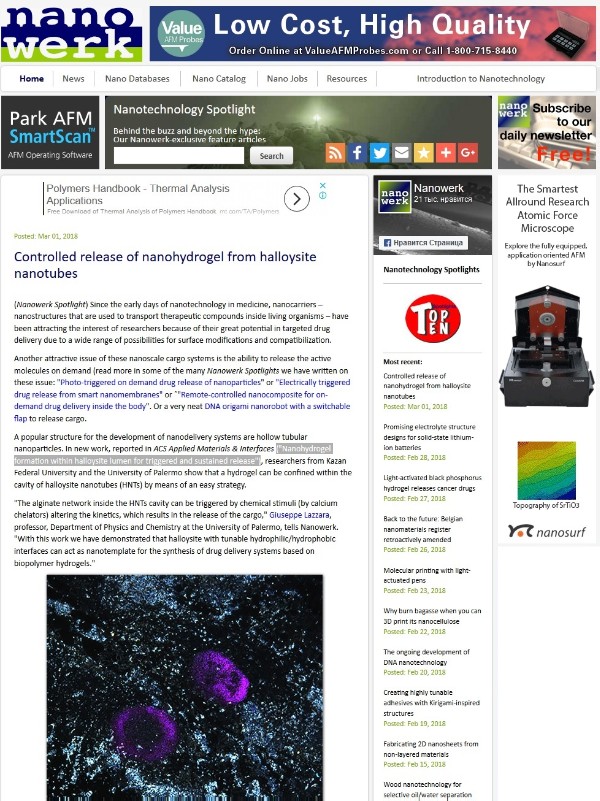Research Highlights 2016-2020

Our research is highlighted in national and international media sources
 | September 1, 2020 The scientific group from Russia proposed innovative active photocatalysts based on natural aluminosilicate nanotubes with cadmium sulfide quantum dots on their surface, which were synthesized by the principle of self-assembly. |
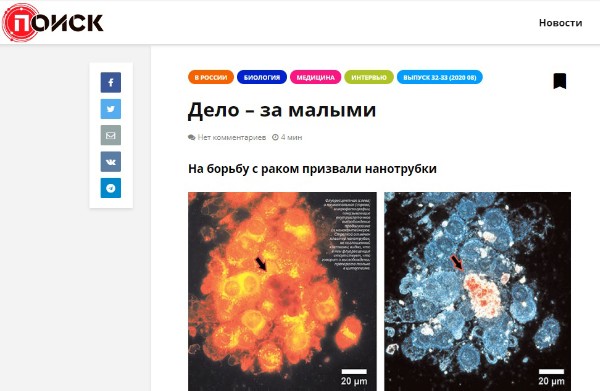 | Scientists from the Institute of fundamental medicine and biology of the Kazan Federal University are developing a distinctive approach. |
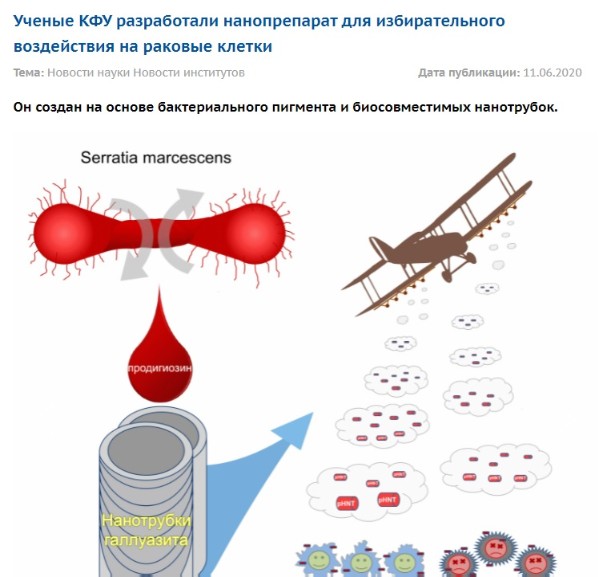 | June 11, 2020 KFU scientists have developed nanodrug selectively affecting cancer cells. It is based on bacterial pigment and biocompatible nanotubes. |
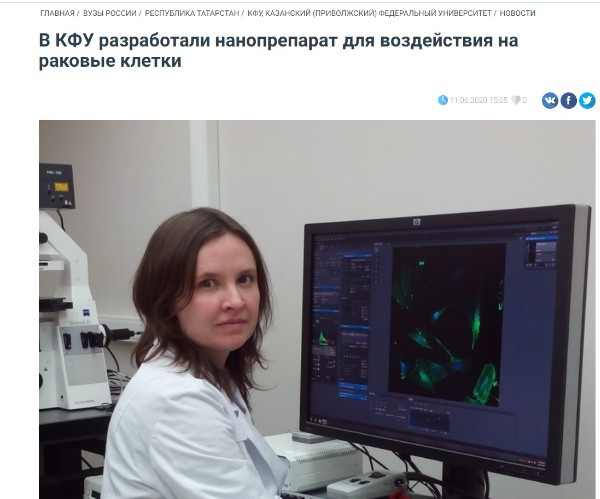 | June 11, 2020 The Bionanotechnology group at KFU and colleagues from the University of Palermo (Italy) have developed nanodrug with selective activity towards cancer cells without affecting the physiological activity of normal cells. |
 | June 11, 2020 KFU employees, in collaboration with colleagues from Italy, have developed a new solution against cancer cells based on halloysite nanotubes and pigment prodigiosin. |
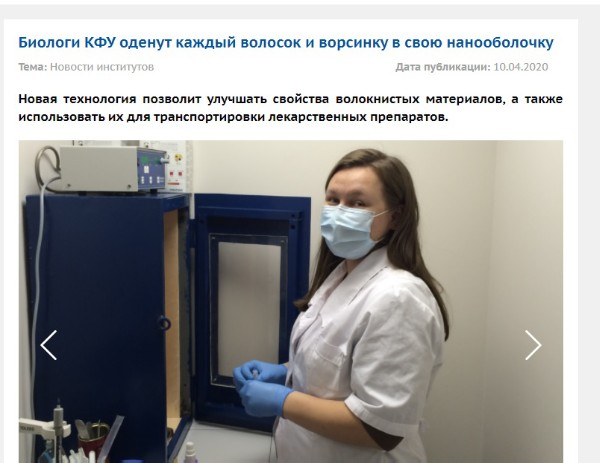 | April 10, 2020 Biologists at KFU will coat each hair and lint in its nano-shell. The new technology will make it possible to improve the properties of fibrous materials and use them for drug delivery. |
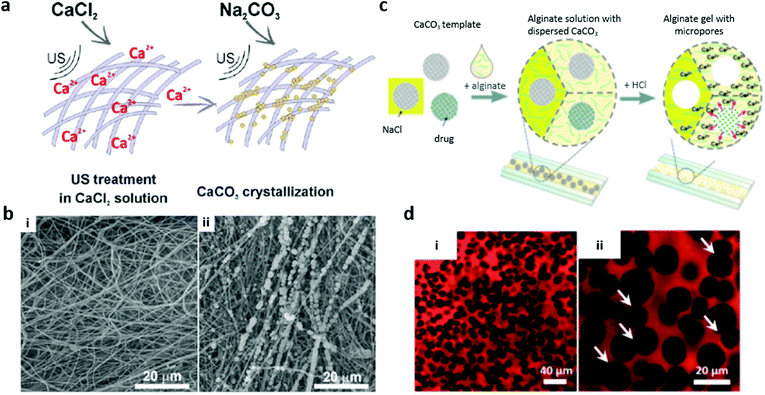 | April 10, 2020 KFU bionanotechnologists will develop methods for modifying human hair. With their help, it will be possible not only to change the color of the hair, thickness, texture and aroma, but also to protect the structure of the hair and skin under them from ultraviolet radiation. |
 | November 10, 2020 Researchers at KFU have improved a biological method of controlling oil pollution. The reference point of this research was the symbiotic relationship between a particular species of nematodes and marine bacteria. |
 | November 10, 2020 Scientists at Kazan Federal University have applied an unusual approach to eliminate the oil spill consequences. The method is based on invertebrates – nematodes. |
 | February 28, 2020 Recent advances in bionanotechnology are discussed in our conversation with the Doctor of biological sciences, the Head of the Research Laboratory of Bionanotechnology of the Institute of Fundamental Medicine and Biology of KFU, Rawil Fakhrullin. |
 | July 23rd, 2019 Scientists from Kazan Federal University, together with colleagues from the University of Palermo (Italy), have developed a safe and effective emulsion for the restoration and preservation of stone cultural monuments. |
 | April 24th, 2019 Scientists from Kazan Federal University, together with colleagues from the Technical University of Louisiana, have developed a new safe technology for hair dyeing based on clay nanotubes. |
| Nanowerk In new work, reported in ACS Applied Materials & Interfaces ("Nanohydrogel formation within halloysite lumen for triggered and sustained release"), researchers from Kazan Federal University and the University of Palermo show that a hydrogel can be confined within the cavity of halloysite nanotubes (HNTs) by means of an easy strategy. |
American Pharmacists Association The article "Paclitaxel Encapsulated in Halloysite Clay Nanotubes for Intestinal and Intracellular Delivery" presents the possibility of forming tablets using the natural clay nanotubes halloysite, loaded with anti-cancer drug paclitaxel. | |
| SPIE Surface-enhanced Raman scattering can be used as an alternative approach for evaluating the toxicity of nanoparticles in single living cells, bypassing the complications faced by conventional cytotoxicity assays. |
| February 16, 2017 Biologists at KFU have obtained 3D images of the cuticle surface of soil nematodes using atomic force microscopy. |
| Чердак: наука, технологии, будущее January 24, 2017 Researchers obtained the image of C. elegans body cuticle in the worm's natural habitat by scanning probe microscope. |
| January 26, 2017 The study of C. elegans nematodes has great practical importance as they are used as models in numerous biomedical research, including drug screening and toxicity assessment. |
| OPTEC The research group led by Rawil Fakhrullin at the IFBM department of KFU have studied C. elegans body cuticle nanostructure using atomic force microscopy. |
| ГТРК Татарстан Cyborgs will help to prevent ecological disaster and cure people. Currently, Kazan scientists are working on the construction of cells that can protect and support normal ones. Another remedy is to deliver auxiliary biological components to the hearth of an ailment. The basis of it was found not far away. Under our feet. Watch the past broadcast on youtube. |
| Nanowerk Scientists from Kazan Federal University report for the first time the effective imaging of the nanoscale structure of C. elegans nematodes' cuticle using atomic force microscopy operating in PeakForce Tapping mode. |
| Nanowerk The researchers show that surface-enhanced Raman scattering (SERS) can be used as an alternative nanotoxicity evaluation method. |
| Nanowerk A nanoshell 'smart dress' for oil-degrading bacteria. |
| EurekAlert Cell encapsulation allows fabricating live microbial cells with magnetic nanoparticles onto cell walls, which mimics natural magnetotactic bacteria. For this study researchers from Kazan Federal University and Louisiana Tech University chose Alcanivorax borkumensis marine bacteria as a target microorganism for cell surface engineering with magnetic nanoparticles. |
| Open Nanofabrication Scientists performed cell surface engineering with magnetic nanoparticles on marine bacteria. |
| July 22, 2016 The modified polyelectrolyte-magnetite nanocoating was applied to functionalize the cell walls of oil decomposing bacteria Alcanivorax borkumensis. |
| Nanowerk Scientists from Kazan Federal University demonstrated the enhancement of mechanical strength, higher water uptake and thermal properties in chitosan-gelatine-agarose hydrogels doped with halloysite used as the materials to produce tissue engineering scaffolds. |
| May 2, 2016 Scientists from Kazan confirm the great potential of chitosan-agarose-gelatine nanocomposite porous scaffolds doped with halloysite in tissue engineering. |
| April 29, 2016 Clay Nanotube-biopolymer Composite Scaffolds for Tissue Engineering are presented by scientists from Kazan Federal University. |
| April 29, 2016 Scientists from Kazan Federal University presented a novel halloysite-doped biopolymer tissue engineering scaffold. |
| April 29, 2016 Scientists combined three biopolymers, chitosan and agarose (polysaccharides), and a protein gelatine, as the materials to produce tissue engineering scaffolds and demonstrated the enhancement of mechanical strength (doubled pick load), higher water uptake and thermal properties in chitosan-gelatine-agarose hydrogels doped with halloysite. |
| Государственная телерадиокомпания "Татарстан" Halloysite nanotubes will help to heal from diseases. Employees of the Laboratory "Bionanotechnology" of Kazan Federal University told about the unique properties of this substance and the prospects for its use in medicine. |





